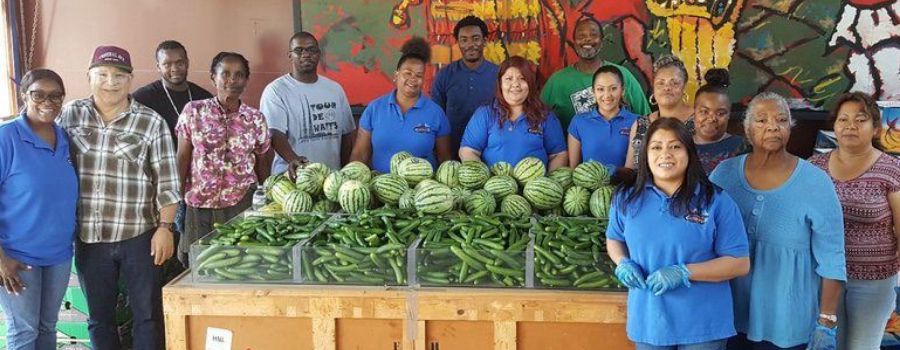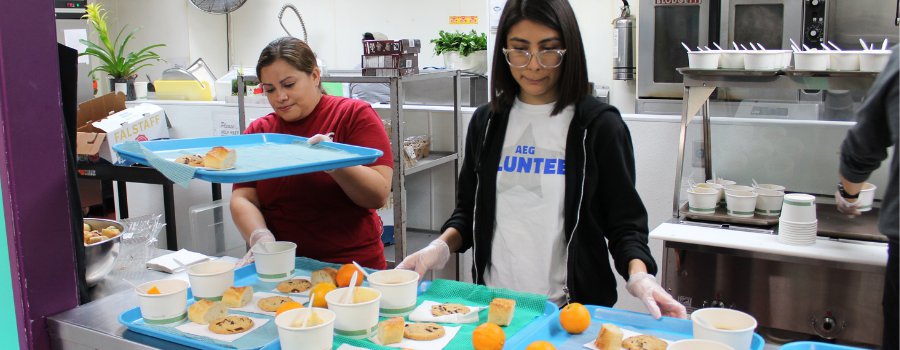Jurisdiction Food Recovery Programs

Jurisdictions need to identify the capacity of local food recovery organizations like this one.
SB 1383 requires each jurisdiction in California to implement an edible food recovery program, which will:
- Feed hungry people
- Create new green jobs
- Strengthen relationships between food donors and food recovery organizations
- Help create sustainable funding for food recovery organizations
- Frequently Asked Questions
- Safe Surplus Food Toolkit PDF (guidance for food facilities)
- Safe Surplus Food Donation Toolkit PDF (guidance for environmental health departments)
Requirements and Capacity Planning
Identify Commercial Edible Food Generators (Food Donors)
The law lists 12 categories of commercial edible food generators that are required to send surplus food to food recovery organizations.
Jurisdictions must:
- Identify commercial edible food generators within their jurisdiction.
- Provide annual education and outreach.
- Assess their community’s food recovery capacity and plan for additional capacity, if needed.
- Verify that commercial edible food generators have established a contract or written agreement for food recovery and are maintaining records of their food donation activities.
- This helps ensure they are sending the maximum amount of edible food they would otherwise dispose of.
- Post contact information for food recovery organizations on their websites so commercial edible food generators can find organizations to potentially accept their food.
CalRecycle Guidance for Jurisdictions: How to Identify Commercial Edible Food Generators – best practices to help identify regulated businesses and successfully manage a food recovery network in their community.
SB 1383 went into effect January 1, 2022. Jurisdictions should have assessed their community’s food recovery capacity.
Jurisdictions are responsible for continuously ensuring they meet infrastructure needs to support food recovery networks in their communities.
SB 1383 allows mandated food donors to work with food recovery organizations, such as food banks and pantries, soup kitchens, and food recovery services, which collect excess edible food and deliver it to these organizations.
Food donors are required to:
- Establish contracts or written agreements with food recovery organizations or services.
- Keep records of the following information for each food recovery organization or service that they donate to in order to demonstrate compliance:
- Types of food recovered
- Pounds of food recovered, in pounds per month
- Frequency that the food is recovered
Jurisdictions are required to educate food donors about these requirements and monitor their compliance.
For more information, visit the Food Donors webpage.
Mandated Food Donors Include:
- Supermarkets
- Grocery Stores – facilities ≥ 10,000 sq. ft.
- Food Service Providers
- Food Distributors
- Wholesale Food Vendors
- Restaurants – facilities ≥ 5,000 sq. ft. or 250+ seats
- Hotels – with an on-site food facility and 200+ rooms
- Health Facilities – with an on-site food facility and 100+ beds
- Large Venues
- Large Events
- State Agency Cafeterias – facilities ≥ 5,000 sq. ft. or 250+ seats
- A Local Education Agency – with an on-site food facility

Monitor Food Donor Compliance
Jurisdictions are required to monitor food donors’ compliance through an inspection and enforcement program that includes inspections to verify:
- Edible food recovery contracts and written agreements
- Recordkeeping
- That mandated food donors offer for donation the maximum amount of edible food they would otherwise dispose.
Jurisdictions can combine inspections of mandated food donors with existing mandatory inspections of food facilities.

Jurisdictions may fund actions to comply with local edible food recovery program requirements through:
- Franchise fees
- Local assessments
- Other funding mechanisms
This provision supports the development of a sustainable funding source to help jurisdictions cover food recovery program implementation costs.
CalRecycle’s grants fund projects that prevent food waste or rescue edible food that would otherwise be landfilled to feed Californians in need.
Projects awarded since 2018 have resulted in:
- 260 million meals
- 443 local jobs
- 312 million pounds of food kept out of landfills to date
- GHG reductions equal to 68,692 cars off the road (294,492 MTCO2e less to date)
(data as of September 2025)
Model Tools
CalRecycle developed the following SB 1383 tools to assist jurisdictions with implementing their food recovery program requirements.
For more information contact: Short-Lived Climate Pollutants (SLCP), Organic Waste Methane Emissions Reductions, SLCP.Organics@calrecycle.ca.gov

